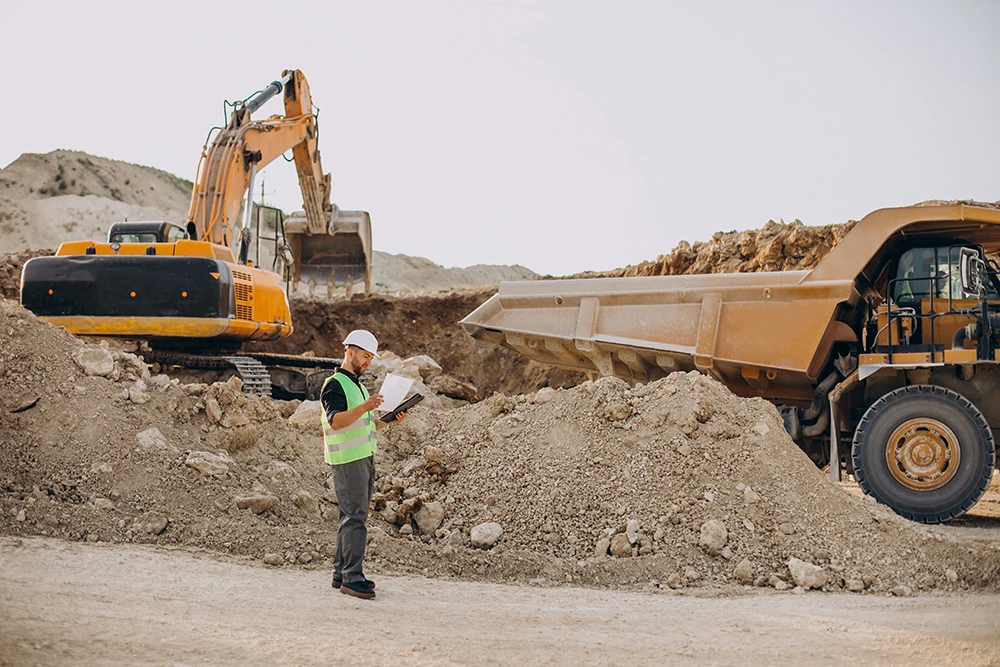From Traditional to Modern Methods Introduction
Demolition has always been an essential part of urban development, making way for new infrastructure while ensuring the safe removal of aging or hazardous structures. Over the years, demolition techniques have evolved significantly, shifting from manual labor-intensive methods to advanced, technology-driven solutions. In this article, we will explore the transformation of demolition practices, highlighting traditional approaches and the modern innovations that have revolutionized the industry.
In the past, demolition was largely a manual process, requiring significant human effort and basic tools. These methods were effective for their time but often posed safety risks and environmental challenges.
1.1. Hand Demolition
- One of the oldest forms of demolition, involving tools like hammers, chisels, and crowbars.
- Typically used for small structures, interior renovations, or partial demolitions.
- Labor-intensive and time-consuming, with a high risk of injury.
1.2. Wrecking Ball Demolition
- First introduced in the early 20th century, the wrecking ball became a symbol of large-scale demolition.
- A heavy steel ball, weighing several tons, was swung by a crane to break down buildings.
- Effective for concrete and brick structures but posed risks due to flying debris and lack of precision.
1.3. Explosive Demolition (Blasting)
- One of the first controlled demolition techniques using dynamite or other explosives to bring down buildings.
- While effective for large-scale demolitions, the method required extreme precision to avoid unintended damage to nearby structures.
- Environmental concerns, such as air pollution and ground vibrations, limited its widespread use in urban areas.
Lorem ipsum dolor sit amet, consectetur adipiscing elit. Ut elit tellus, luctus nec ullamcorper mattis, pulvinar dapibus leo.
Traditional Demolition Methods
In the past, demolition was largely a manual process, requiring significant human effort and basic tools. These methods were effective for their time but often posed safety risks and environmental challenges.
1.1. Hand Demolition
- One of the oldest forms of demolition, involving tools like hammers, chisels, and crowbars.
- Typically used for small structures, interior renovations, or partial demolitions.
- Labor-intensive and time-consuming, with a high risk of injury.
1.2. Wrecking Ball Demolition
- First introduced in the early 20th century, the wrecking ball became a symbol of large-scale demolition.
- A heavy steel ball, weighing several tons, was swung by a crane to break down buildings.
- Effective for concrete and brick structures but posed risks due to flying debris and lack of precision.
1.3. Explosive Demolition (Blasting)
- One of the first controlled demolition techniques using dynamite or other explosives to bring down buildings.
- While effective for large-scale demolitions, the method required extreme precision to avoid unintended damage to nearby structures.
- Environmental concerns, such as air pollution and ground vibrations, limited its widespread use in urban areas.
The Rise of Modern Demolition Techniques
High-Reach Excavators
• One of the most widely used modern demolition methods, replacing wrecking balls. • Equipped with hydraulic arms and specialized attachments to dismantle buildings floor by floor. • Reduces airborne dust and debris, making it safer for workers and surrounding areas.
Robotic Demolition
• The introduction of remotely operated demolition robots has transformed the industry. • Robots can access confined spaces and hazardous environments without risking human lives. • Ideal for interior demolitions, concrete cutting, and operations in high-risk areas such as nuclear facilities.
Selective Demolition (Deconstruction)
• A sustainable approach that involves carefully dismantling structures to salvage and reuse materials. • Reduces waste and promotes recycling, helping construction companies lower their carbon footprint. • Commonly used for green building projects and historic preservation efforts.
Hydrodemolition (Water Jetting)
• Uses high-pressure water jets to remove concrete while preserving structural integrity. • Generates less dust and noise pollution than traditional mechanical demolition. • Ideal for bridge and highway repairs, where precision is crucial.
Implosion Demolition (Advanced Controlled Blasting)
• A refined version of traditional explosive demolition, designed for maximum safety and control. • Structural elements are weakened at key points to ensure the building collapses inward, minimizing debris spread. • Used for demolishing high-rise buildings and stadiums in dense urban environments.
The Role of Technology in Demolition
Innovations in demolition technology have made the process more efficient and environmentally friendly. Some key advancements include:
✔️ Drones for Site Inspection:
- Provide real-time aerial footage to assess demolition sites.
- Improve planning and safety analysis before demolition begins.
✔️ 3D Modeling & Simulation:
- Allows engineers to predict how a structure will collapse, minimizing risks.
- Helps determine the safest and most effective demolition method.
✔️ Advanced Dust Suppression Systems:
- Water misting systems and vacuum extractors help control airborne dust and pollutants.
- Ensures compliance with environmental safety regulations.
✔️ Recycling and Material Recovery Innovations:
- Advances in sorting technology help separate concrete, metal, and wood for reuse.
Reduces landfill waste and lowers demolition costs.
The Future of Demolition
The demolition industry is continually evolving, with a focus on automation, sustainability, and efficiency. Some expected future trends include:
🔹 Artificial Intelligence (AI) & Machine Learning – AI-powered demolition robots that can assess structures and optimize demolition sequences.
🔹 Eco-Friendly Demolition Materials – Development of biodegradable or reusable materials that make deconstruction easier and greener.
🔹 Zero-Waste Demolition – New policies encouraging 100% recycling of demolition materials.
🔹 Self-Repairing Buildings – Innovations in smart materials that reduce the need for frequent demolition.
Conclusion
From manual labor to robotic precision, demolition techniques have undergone a remarkable transformation. Modern technology has made the process safer, faster, and more environmentally conscious. As the industry continues to innovate, we can expect even greater advancements in automation, sustainability, and efficiency.
For construction companies and developers, choosing the right demolition method can improve project timelines, reduce costs, and minimize environmental impact.
